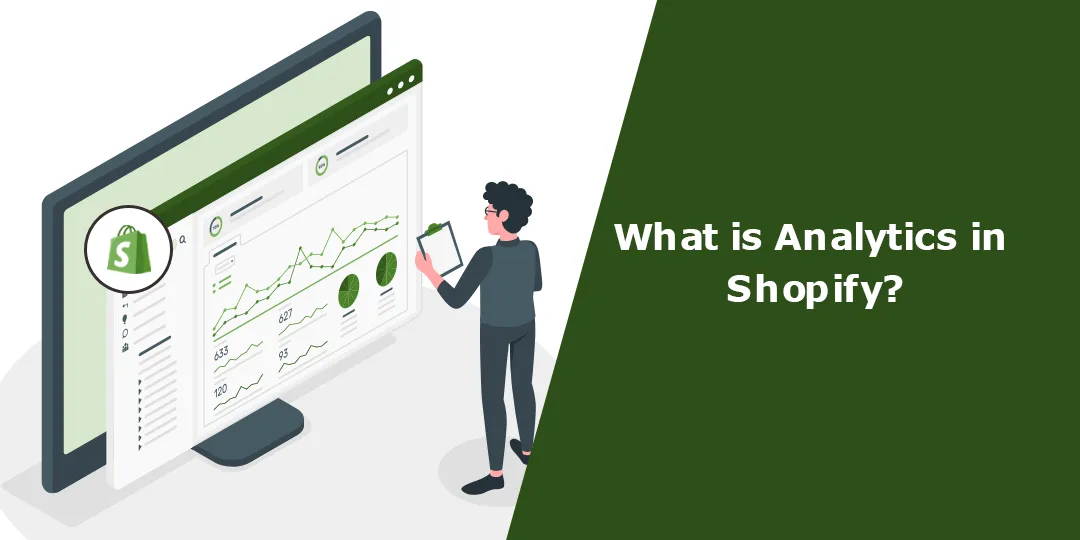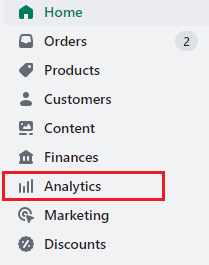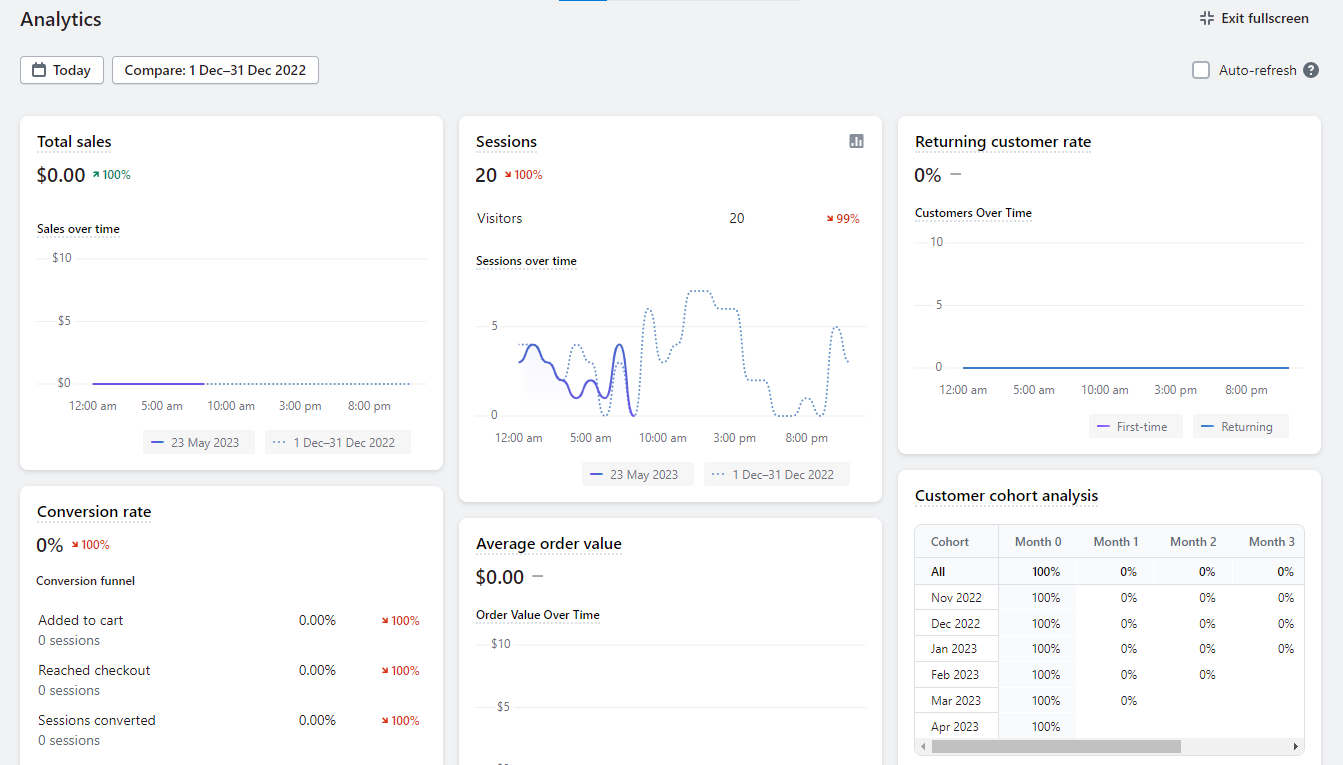Hello Shopify Friends,
We are here again with another Shopify tutorial for you regarding Shopify Analytics tools.
Let us get straight to the point.
We agree, but reliable data is crucial to make smart choices for store design, marketing analysis, and revenue goals. Only reliable data can lead to good decisions. Shopify store owners must use Shopify Analytics and other analytics tools to get valuable insights and guarantee the success of their business.
What Does Analytics in Shopify Do?
Shopify Analytics is an exceptional built-in tracker for analytics in Shopify that can help you watch your store’s performance using the invaluable Shopify store data. This reliable data provides you with detailed metrics such as the total store sessions, sales, returning customers, and average order value.
With this insightful information at your fingertips, you can make informed decisions about your store’s marketing and promotional strategies, ensuring that your business remains competitive in today’s fast-paced e-commerce landscape.
Analytics in Shopify also allows its users to take snapshots of its high-level metrics on the Shopify Analytics dashboard, and with the help of these metrics, Shopify admins can monitor their visitors’ behavior and interaction with their Shopify store.
Here is a list of the most-viewed metrics on the Shopify analytics dashboard:
- Total Sales: It is the metric showing the total revenue of your Shopify store has achieved over a specific period of time.
- Online Store Sessions: A metric calculates the total number of customers that have visited (including repeat visits) your Shopify store within a specific date range.
- Returning Customer Rate: A percentage metric that shows the percentage of customers who have made a purchase from your Shopify store more than once.
- Conversion Rates: A metric that monitors the number of customer visits that encouraged them to convert and purchase.
How to Use Analytics in Shopify?
As we discussed earlier, Analytics in Shopify monitors all your business activities and displays all the data and reports in the Shopify Analytics dashboard.
The Shopify Analytics dashboard displays all the data regarding the metrics we discussed above. (total sales, conversion rates, store sessions, etc.)
Step 1 –
Go to Shopify Admin > Analytics.
A page with all the metrics will appear on your screen.
Step 2 –
Select the from and to dates on which you want to compare the metrics.
After applying the compare dates, you will be provided with all the comparing data of all the metrics on your Shopify analytics dashboard.
Wrapping Up
That was unbelievingly easy. Phew! ?
Give a pat on your back. You learned something new. ?
By the end of this Shopify tutorial, you must have concluded what Analytics in Shopify can do for you and how it can help take important business decisions for your Shopify stores. The Shopify Analytics dashboard covers all the data and reports that are very important for Shopify admins.
Honestly, there are a lot more non-technical things to learn in Shopify, and we are trying to cover that all up for you, but if you are stuck somewhere, then consult a Shopify development agency ASAP.
Happy Monitoring!
—————————————————————————————————————————————–
Frequently Asked Questions
(1) What is analytics in Shopify?
Answer: Analytics in Shopify refers to the process of collecting, analyzing, and interpreting data related to your Shopify store’s performance. It involves gathering information about your website visitors, customer behavior, sales, marketing campaigns, and other relevant metrics. By utilizing analytics tools and features, you can gain insights into various aspects of your business, make data-driven decisions, and optimize your store’s performance.
(2) Why is analytics important in Shopify?
Answer: Analytics is crucial in Shopify because it provides valuable insights into how your online store is performing. By analyzing data, you can understand customer behavior, identify trends, track sales, evaluate marketing efforts, and measure the effectiveness of your strategies. These insights help you make informed decisions to improve your store’s performance, optimize marketing campaigns, identify areas for growth, and increase overall sales and customer satisfaction.
(3) What type of data can be analyzed in Shopify analytics?
Answer: In Shopify analytics, you can analyze various types of data, including:
- Sales data: This includes information about your store’s orders, revenue, average order value, and product performance.
- Traffic data: It provides insights into the number of visitors, traffic sources, popular landing pages, and referral websites.
- Customer data: You can analyze data related to customer demographics, purchasing behavior, lifetime value, and repeat purchases.
- Marketing data: This includes information about the performance of your marketing campaigns, conversion rates, and the effectiveness of different marketing channels.
- Inventory data: You can track inventory levels, product variants, stock availability, and popular products.
- Conversion data: It helps you understand the conversion rates at different stages of the customer journey, such as add-to-cart, checkout, and successful purchases.
(4) What tools are available for analytics in Shopify?
Answer: Shopify provides built-in analytics features and integrates with various third-party analytics tools. The primary analytics tools available in Shopify are:
- Shopify Reports: It offers a range of pre-built reports that provide insights into sales, orders, and customer behavior.
- Shopify Analytics Dashboard: This provides a visual overview of your store’s key metrics and performance indicators.
- Google Analytics: Shopify integrates with Google Analytics, allowing you to track and analyze detailed data about your store’s visitors, conversions, and more.
- Third-Party Analytics Apps: Shopify’s App Store offers numerous analytics apps that provide advanced reporting, segmentation, and data visualization capabilities.
(5) How can I use analytics in Shopify to improve my store’s performance?
Answer: To improve your store’s performance using analytics in Shopify, consider the following steps:
- Set goals: Define clear goals and key performance indicators (KPIs) based on your business objectives.
- Track relevant metrics: Use analytics tools to track metrics related to sales, traffic, customer behavior, and marketing efforts.
- Analyze data: Regularly analyze the collected data to identify trends, patterns, and areas for improvement.
- Make data-driven decisions: Use the insights gained from analytics to make informed decisions about pricing, marketing strategies, product assortment, and customer experience.
- Optimize marketing campaigns: Evaluate the performance of your marketing campaigns and allocate resources to the most effective channels.
- Personalize the customer experience: Leverage customer data to personalize your marketing messages, recommend relevant products, and improve overall customer satisfaction.
- Continuously test and iterate: Use A/B testing and experimentation to refine your strategies and continuously improve your store’s performance based on data-backed insights.












